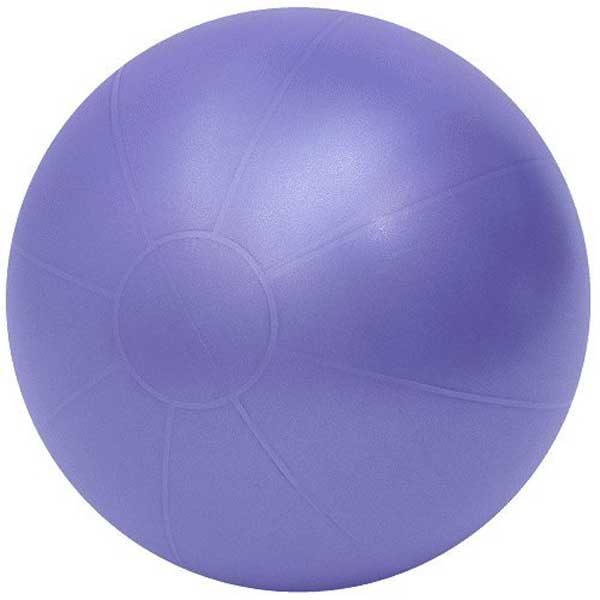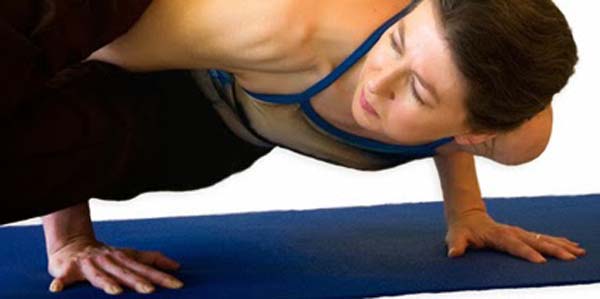Physioballs
I thought I would take the opportunity to recommend some great exercise equipment we routinely use in 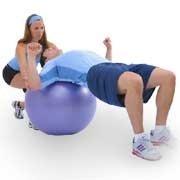 our Core Conditioning classes.
our Core Conditioning classes.
Physioballs
What is a physioball? It is an exercise ball that is constructed of elastic, soft PVC with a diameter of approximately 35 to 85 centimeters (14 to 34 inches) and filled with air. The air pressure is changed by removing a valve stem and either filling with air or letting the ball deflate. It is most often used in physical therapy, athletic training and exercise. It can also be used for weight training. The ball is also known by a number of different names, including, swiss ball, balance ball, birth ball, body ball, fitness ball, gym ball, gymnastic ball, pilates ball, Pezzi ball, sports ball, stability ball, Swedish ball, therapy ball, or yoga ball. It is larger and much lighter than a medicine ball.
The history of the physioball starts with physical therapy. In 1963, Aquilino Cosani, an Italian plastics manufacturer created the “Swiss Ball”. He perfected a process for molding large puncture-resistant plastic balls. Called “Pezzi” balls, they were first used in treatment programs for newborns and infants by Mary Quinton, a British physiotherapist working in Switzerland. The ball was later used in physical therapy for neuro-developmental treatment.
Klein-Bogeback advocated the ‘functional kinetics’ use of the ball to treat adults with orthopedic or medical problems. Upon witnessing the benefits in Switzerland, American physical therapists began using the “Swiss Ball” techniques in America. The use of the physioball in athletic training followed its physical therapy use and phyioballs are now common in gyms, yoga studios and pilates studios.
What area of the body does it work? The core muscles are challenged most of the time and many other muscles can be challenged depending on how it is used. It is a useful tool in enhancing balance and coordination.
I have purchased many physioballs from many different companies. You can easily find these balls at most sporting goods stores as well as big box stores like Walmart. These balls come in standard sizes and you chose your size based on your height. Here is a sizing chart:
- Your height = Up to 4’10″ – best ball is 45 cm (18 inches)
- 4’8″ to 5’5″ – best ball is 55 cm (22 inches)
- 5’6″ to 6’0″ – best ball is 65 cm (26 inches)
- 6’0″ to 6’5″ – best ball is 75 cm (30 inches)
- over 6’5″ (gosh you are tall!) – best ball is 85 cm (33 inches)
Sometimes leg length matters more than your height, so you may want to sit on a few balls in order to find what works best for you. The other thing that makes a difference is your weight and how the ball is inflated. When under-inflated the ball will be very squishy. This can increase instability and based on my observation of users over the last decade, reduces the overall joy of sitting on a physioball. However, you must avoid over-inflating a physioball as this can cause it to burst while you sit on it. It would be exactly how you are imaging it right now – a pop – and then you are suddenly on the floor, hopefully on a very cushioned mat.
None of my physioballs have ever deflated while in use. They do make ‘burst’ resistant balls, but that just means they deflate less like a balloon popping. I have had balls deflate due to valve problems, carpet tack puncture, proximity to a space heater and in one memorial instance – dog bite.
So, avoid exposing your physioball to sharp objects (carpet tacks, cat claws, running with scissors) and make sure they don’t roll up against a space heater. As far as dogs, small dogs are not the problem, but a large dog has the mouth size and ability to puncture a ball.
Children love physioballs and in over a decade of observation I can tell you that up to about the age of 10 or 12 almost all children have the same reaction to a physioball. They run joyfully full speed into the physioball and are then bounced backward in what I am sure is a very educational demonstration of physics. So, if you have children, you are probably used to them hurling themselves at objects, but if you are like me, it is always such a shock (by the way, no children I have witnessed were ever hurt by their physioball mad rush of love, but I think that is because their bottoms must be made out of springs).
So by now you are probably so overcome with desire for one you are ready to rush out and get one for yourself. Great. You can easily find basic models practically anywhere. However, if you want my advice, get one of the better quality balls. Yes, they are more expensive, but the quality is much better and they are more durable.
Here is a great choice:
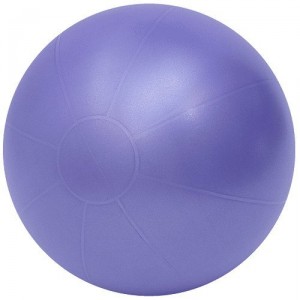 This Swiss Pro ball is from the TheraGear company and made to last. On their website they say “it features extra thick walls, constructed to perform with exceptional durability for your workout and offers maximum firmness and support. If the ball is punctured it will deflate safely and slowly. The Theraguard™ ABS system is burst-proof up to 500 lbs. and has a 2,200 lbs. static weight limit. It will not flatten out! Fitness professional and casual fitness enthusiasts will get the most out of their daily workout using the Theragear Swiss Pro Ball.” You can check out other reviews on Amazon. The one pictured is a 65 cm (26 inch ball) but there are many more sizes available.
This Swiss Pro ball is from the TheraGear company and made to last. On their website they say “it features extra thick walls, constructed to perform with exceptional durability for your workout and offers maximum firmness and support. If the ball is punctured it will deflate safely and slowly. The Theraguard™ ABS system is burst-proof up to 500 lbs. and has a 2,200 lbs. static weight limit. It will not flatten out! Fitness professional and casual fitness enthusiasts will get the most out of their daily workout using the Theragear Swiss Pro Ball.” You can check out other reviews on Amazon. The one pictured is a 65 cm (26 inch ball) but there are many more sizes available.
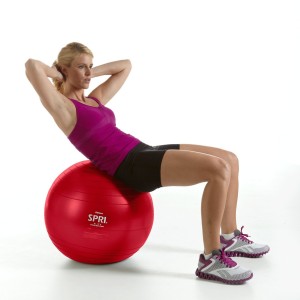 Another good choice is found from this company, SPRI. called an elite xercise balance ball, it is touted to be the same thick, durable quality as found in gyms. It is also a slow deflate and comes in the various sizes. You can read other Amazon reviews as well.
Another good choice is found from this company, SPRI. called an elite xercise balance ball, it is touted to be the same thick, durable quality as found in gyms. It is also a slow deflate and comes in the various sizes. You can read other Amazon reviews as well.
There is another company that makes a similar high quality physioball and that is Sissel Securemax Exercise ball. You can find it on their website here.
Please follow the instructions very carefully on inflating your ball. It is best to inflate it partially and let the material stretch a bit for a day or two before inflating to the full size. Be sure to measure the inflation size since over-inflation can prove hazardous.


